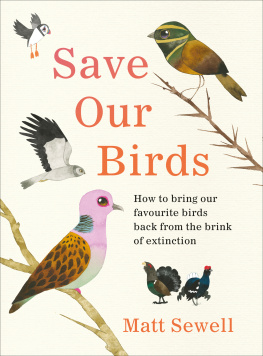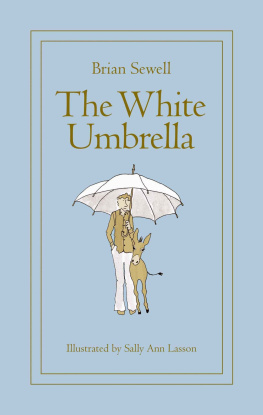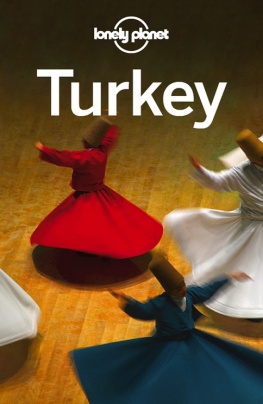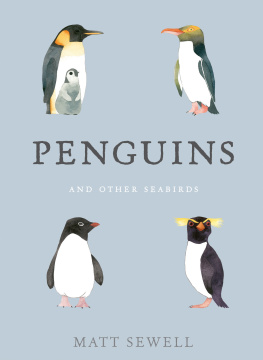Brian Sewell is one of the most recognisable names in art criticism today: discerning, often controversial and without fail entertaining and informative. He appears regularly on TV and radio and is the art critic of Londons Evening Standard.
An excellent read.
Evening Standard
Startlingly original.
Times Literary Supplement
Tauris Parke Paperbacks is an imprint of I.B.Tauris. It is dedicated to publishing books in accessible paperback editions for the serious general reader within a wide range of categories, including biography, history, travel and the ancient world. The list includes select, critically acclaimed works of top quality writing by distinguished authors that continue to challenge, to inform and to inspire. These are books that possess those subtle but intrinsic elements that mark them out as something exceptional.
The Colophon of Tauris Parke Paperbacks is a representation of the ancient Egyptian ibis, sacred to the god Thoth, who was himself often depicted in the form of this most elegant of birds. Thoth was credited in antiquity as the scribe of the ancient Egyptian gods and as the inventor of writing and was associated with many aspects of wisdom and learning.
SOUTH FROM
EPHESUS
Travels through
Aegean Turkey
Brian Sewell
New paperback edition published in 2012 by Tauris Parke Paperbacks
An imprint of I.B.Tauris and Co Ltd
6 Salem Road, London W2 4BU
175 Fifth Avenue, New York NY 10010
www.ibtauris.com
Distributed in the United States and Canada Exclusively by Palgrave Macmillan
175 Fifth Avenue, New York NY 10010
First published in 1988 by Ebury Press
Copyright 1988, 1989, 2012 Brian Sewell
Cover image: Library of Celsus, Ephesus, Turkey Marc Schlossman / Getty Images
The right of Brian Sewell to be identified as the author of this work has been asserted by him in accordance with the Copyright, Designs and Patents Act 1988.
All rights reserved. Except for brief quotations in a review, this book, or any part thereof, may not be reproduced, stored in or introduced into a retrieval system, or transmitted, in any form or by any means, electronic, mechanical, photocopying, recording or otherwise, without the prior written permission of the publisher.
ISBN: 978 1 78076 120 6
eISBN: 978 0 85773 144 9
A full CIP record for this book is available from the British Library
A full CIP record is available from the Library of Congress
Library of Congress Catalog Card Number: available
Acknowledgements
I am deeply grateful for the practical help of Mrs Susan Raven and Mark Ottaway of the Sunday Times, and to Lucretia Stewart, Editor of Departures, all of whom have commissioned from me articles on Turkey. To Steve Speck of British Airways I owe flights to Istanbul that could not otherwise have been made. Ian Bishop of the Natural History Museum has answered innumerable tiresome questions on goats, wild boar and the animal specimens sent back by Charles Fellows. In the British Museum, Terence Mitchell of the Department of Western Asiatic Antiquities, Brian Cook of the Department of Greek and Roman Antiquities, and Geoffrey House of the Department of Public Services have been more than patient with my enquiries and the last has given me friendship and encouragement as well as scholarship. Roger Hudson and Anthony Lambert have made suggestions that rendered the text less imperfect, and Roger Schlesinger made others that rendered it less lubricious, giving me too the energy to complete it.
In Germany I owe a great debt to Dr Rdiger Joppien, who has run errands without complaint, and supplied me with material not available here.
In Turkey Mrs Glsen Kahraman has given me unstinting practical help, never asking a quid pro quo, and Mme Zehra Sulupinar has worked small miracles. Without the hospitality and scholarship of Dr Kenan Erim, the chapter on Aphrodisias could not have been written. Without the advice of Ekrem Berik, and access to his research material, my comments on the sexual awareness of the Turks would have been less accurate. To Cater Canli, of Trkiye Cumhuriyeti Turizm Bankasi, I owe gratitude for much hospitality. To Osman Delikkulak I owe friendship.
Preface
I t is with profound melancholy that I write a second preface to my only book. Much of the first I cannot better; it was written, as was the book, by a much younger man, vigorous, curious and optimistic, physically strong and almost fearless, whom I can barely remember, his autobiographical coups doeil seeming those of a near stranger.
South from Ephesus was grudgingly treated by its first publisher, my photographs refused as illustrations, two whole chapters removed to make it shorter. Of these I have only the meagre notes and my attempt to develop them for this edition I aborted when I found that I could not recover the mannerisms of my Eighties style, leaving the text unchanged. That I hoped it might be followed by other books on Turkey is evident in the Coda. With assistance from and for the benefit of the Turkish Ministry of Culture, Petter Kolrud and I were to catalogue all (we hoped) the surviving rock churches in Cappadocia and, more important because continually pillaged, all the remains of neglected and ravaged Armenian churches in the far north-east. No books followed but our notes and photographs were lodged with the Ministry and may have been of some small help in the preservation of these momuments though of this I am sceptical.
With the photographer David George I trekked every inch of the winding travels of Alexander the Great in Asia Minor, Arrian and Quintus Curtius Rufus our companions; we were convinced that we had at last identified the site of the great Battle of Issus; yet again there was no book, my only reward the dog we found in Mopsuestia, east of Adana, her shoulder dislocated, her foreleg broken, a passenger in my knapsack until I brought her back to London. She is long gone, the black pine that marks her grave in my garden the only memorial of any later Turkish journey. Hence my melancholy: I mourn the books not written.
I mourn for Turkey too. When new, South from Ephesus might have been something of a vade mecum for the traveller, enough of an informative guide to be useful, enough of an ordinary book to amuse. Now, so many years on since the first of my Turkish journeys in 1975, it records a coastal Turkey that no longer exists, lost to every manifestation of mass tourism, the most obliterating layer of the palimpsest.
List of Maps
AEGEAN TURKEY
LYCIA
ANTALYA

AEGEAN TURKEY

LYCIA

ANTALYA
List of Illustrations
1. William Pars, 1765: the Gymnasium at Ephesus.
2. Patrice Bonnet, 1911: a French archaeologists reconstruction of Priene from the seaward approach, with the acropolis hill looming behind.















